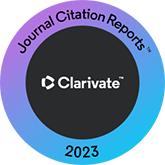Morphological effects on Pali gemination: A preliminary study
DOI:
https://doi.org/10.3989/loquens.2022.e095Keywords:
Pali, gemination, regressive and progressive assimilation, consonant clustersAbstract
Around the turn of the 20th century (Childers, 1879; Müller, 1884; Whitney, 1889; Gray, 1899; Duroiselle, 1906), neogrammarians began studying the Pali language and its grammar. One area of particular interest was the phonological process of assimilation. Pali evidences both progressive and regressive assimilation and it is generally the case that a consonant geminate is formed (Krishnaswamy, et al., 2019). Recent studies (Junghare, 1979; Suzuki, 2002a,b; Gupta, 2003; Schmeiser, 2008; Dutta, 2017) have attempted to explain base-medial consonant gemination in phonological terms.
Though these accounts have furthered our understanding of Pali base-medial consonant gemination, very few studies have considered morphological effects on Pali gemination. The current study, though exploratory in nature, suggests that a problem arises in phonological analyses of Pali geminates in that Pali words evidence different cluster realizations based on morphological factors. In short, the study analyzes the effects of affixes on Pali gemination and suggests that an explanation based solely on syllable structure or sonority is insufficient and calls for further research.
Downloads
References
Browman, C. & L. Goldstein (1989). Articulatory gestures as phonological units. Phonology, 6, 201-251. https://doi.org/10.1017/S0952675700001019
Browman, C. & L. Goldstein (1990). Gestural specification using dynamically-defined articulatory structures. Journal of Phonetics, 18, 299-320. https://doi.org/10.1016/S0095-4470(19)30376-6
Browman, C. & L. Goldstein (1991). Gestural structures: Distinctiveness, phonological processes, and historical change. In I. Mattingly and M. Studdert-Kennedy (Eds.), Modularity and the Motor Theory of Speech Perception (pp. 313-338). Hillsdale, New Jersey: Lawrence Erlbaum.
Browman, C. & L. Goldstein (1992). Articulatory phonology: An overview. Phonetica, 49, 155-180. https://doi.org/10.1159/000261913 PMid:1488456
Byrd, D. (1994). Articulatory Timing in English Consonant Sequences. Ph.D. Dissertation, University of California, Los Angeles.
Byrd, D. (1996). A Phase Window framework for articulatory timing. Phonology, 13, 139-169. https://doi.org/10.1017/S0952675700002086
Childers, R. C. (1879). On sandhi in Pali. The Journal of the Royal Asiatic Society of England and Ireland, 11, 99-121. https://doi.org/10.1017/S0035869X00017184
Collins, S. (2006). A Pali Grammar for Students. Chiang Mai, Thailand: Silkworm Books.
Cser, A. (2000). Phonological models of sonority. The Even Yearbook, 4, 1-18.
Dutta, H. (2017). Strength asymmetries and Pali geminates: An OT account. The EFL Journal, 8(1), 49-65.
Downing, L. (2005). On the ambiguous segmental status of nasals in homorganic NC sequences. In M. van Oostendorp & J. Maarten van de Weijer (Eds.), The Internal Organization of Phonological Segments (pp. 183-216). New York: Cambridge University Press. https://doi.org/10.1515/9783110890402.183
Duroiselle, C. (1906). A Practical Grammar of the Pali Language. Rangoon, Burma: Rangoon College.
Fábregas, A., & M. Krämer (2020). Why prefixes (almost) never participate in vowel harmony. Evolutionary Linguistic Theory, 2(1), 84-111. https://doi.org/10.1075/elt.00016.fab
Gordon, R. (Ed.) (2005). Ethnologue: Languages of the World. Dallas, TX: SIL International (15th Edition).
Goswami, A. (2021). Marked geminates as evidence of sonorants in Sylheti Bangla: An optimality account. Acta Linguistica Asiatica, 11(1), 99-112. https://doi.org/10.4312/ala.11.1.99-112
Gray, L. (1899). Certain parallel developments in Pali and New Persian phonology. Journal of the American Oriental Society, 20, 229-243. https://doi.org/10.2307/592331
Gupta, M. (2003). Linguistics in Pali. New Delhi, India: Sundeep Prakashan.
Hankamer, J. & J. Aissen (1974). The sonority hierarchy. In A. Bruck, R. Fox, & M. La Galy (Eds.), Papers from the Parasession on Natural Phonology (pp. 131-145). Chicago: Chicago Linguistic Society.
Hock, H. H. (2010). Middle Indo-Aryan "aspirate" clusters revisited. Studia Orientalia Electronica, 108, 87-102.
Jespersen, O. (1909). A Modern English Grammar on Historical Principles. Part I: Sounds and Spellings. Heidelberg: Carl Winter,ç. Cited in I. Junghare (1979). Topics in Pali Historical Phonology. Delhi, India: Motilal Banarsidass.
Jun, J. (1994). A constraint-based analysis of place assimilation typology. Studies in the Linguistics Sciences, 24, 263-277. Cited in Y. Suzuki (2002b). Consonant cluster changes in Pali: Toward restricting the phonological patterns: Part 2. Journal of Inquiry and Research, 76, 63-86.
Jun, J. (1995). Perceptual and articulatory factors in place assimilation: an Optimality Theoretic approach. Ph.D. dissertation, University of California, Los Angeles. Cited in Y. Suzuki (2002b). Consonant cluster changes in Pali: Toward restricting the phonological patterns: Part 2. Journal of Inquiry and Research, 76, 63-86.
Junghare, I. (1979). Topics in Pali Historical Phonology. Delhi, India: Motilal Banarsidass.
Kessler, B. (1994). Sandhi and syllables in Classical Sanskrit. In E. Duncan, D. Fargas, & P. Spaelti (Eds.), The Proceedings of the Twelfth West Coast Conference on Formal Linguistics (WCCFL) (pp. 35-50). Chicago: University of Chicago Press.
Krishnaswamy, M., I. Dutta, & U. Banerjee (2019). Active cavity expansion through lingual adjustments to place of constriction in voiced geminates. In Proceedings of Meetings on Acoustics 175ASA, vol. 33(1), p. 060002. Acoustical Society of America. https://doi.org/10.1121/2.0001024
Kubozono, H. (Ed.). (2017). The Phonetics and Phonology of Geminate Consonants (Vol. 2). Oxford: Oxford University Press. https://doi.org/10.1093/oso/9780198754930.001.0001
Lahiri, A., & J. Hankamer, (1988). The timing of geminate consonants. Journal of Phonetics, 16(3), 327-338. https://doi.org/10.1016/S0095-4470(19)30506-6
Müller, E. (1884). A Simplified Grammar of the Pali Language. Cambridge, Mass.: Andober Theological Seminary.
O'Bryan, M. (1971). Some problems with i-insertion in Pāli. Studies in the Linguistic Sciences: Illinois Working Papers, 1(1), 29-50. https://www.ideals.illinois.edu/items/26679.
Palaschke, M. & W. Dressler (1999). Middle Indic formation: syllable structure vs. natural processes. The Yearbook of South Asian Languages and Linguistics, 53-68. https://doi.org/10.1515/9783110245240.53
Rice, K. (1990). Predicting rule domains the phrasal phonology. In S. Inkelas & D. Zec (Eds.), The Phonology-Syntax Connection, (pp. 289-312). Chicago: University of Chicago Press.
Schmeiser, B. (2008). A gestural approach to gemination and nasals in Pali. In E. Tummons & S. Lux (Eds.), Proceedings of the 2007 Mid-America Linguistics Conference: Kansas Working Papers in Linguistics, vol. 30., 302-314. https://doi.org/10.17161/KWPL.1808.3924
Selkirk, E. (1980). Prosodic domains in phonology: Sanskrit revisited. Juncture, 7, 107-129.
Suzuki, Y. (2002a). Consonant cluster changes in Pali: Toward restricting the phonological patterns: Part 1. Journal of Inquiry and Research, 75, 97-125.
Suzuki, Y. (2002b). Consonant cluster changes in Pali: Toward restricting the phonological patterns: Part 2. Journal of Inquiry and Research, 76, 63-86.
Whitney, W. (1889). Sanskrit Grammar: Including both the Classical Language, and the Older Dialects, of Veda and Brahmana. Cambridge, Mass.: Harvard University Press.
Wilson, C. (2001). Consonant cluster neutralisation and targeted constraints. Phonology, 18, 147-197. https://doi.org/10.1017/S0952675701004043
Wright, J. C. (2002). The Pali Subodhālankāra and Dandin's Kāvyādarśa. Bulletin of the School of Oriental and African Studies, 65(2), 323-341. https://doi.org/10.1017/S0041977X02000125
Yu Cho, Y. M. (1995). In defense of juncture rules/constraints. 어학연구. Language Research, 31(4), 1-26.
Published
How to Cite
Issue
Section
License
Copyright (c) 2023 Consejo Superior de Investigaciones Científicas (CSIC)

This work is licensed under a Creative Commons Attribution 4.0 International License.
© CSIC. Manuscripts published in both the print and online versions of this journal are the property of the Consejo Superior de Investigaciones Científicas, and quoting this source is a requirement for any partial or full reproduction.
All contents of this electronic edition, except where otherwise noted, are distributed under a Creative Commons Attribution 4.0 International (CC BY 4.0) licence. You may read the basic information and the legal text of the licence. The indication of the CC BY 4.0 licence must be expressly stated in this way when necessary.
Self-archiving in repositories, personal webpages or similar, of any version other than the final version of the work produced by the publisher, is not allowed.














